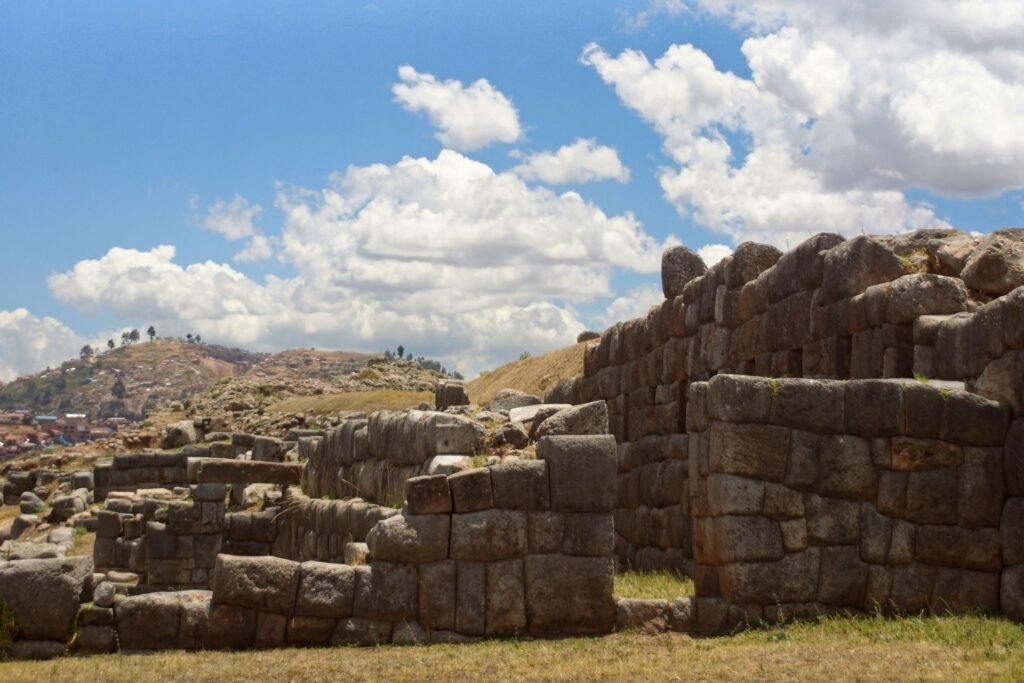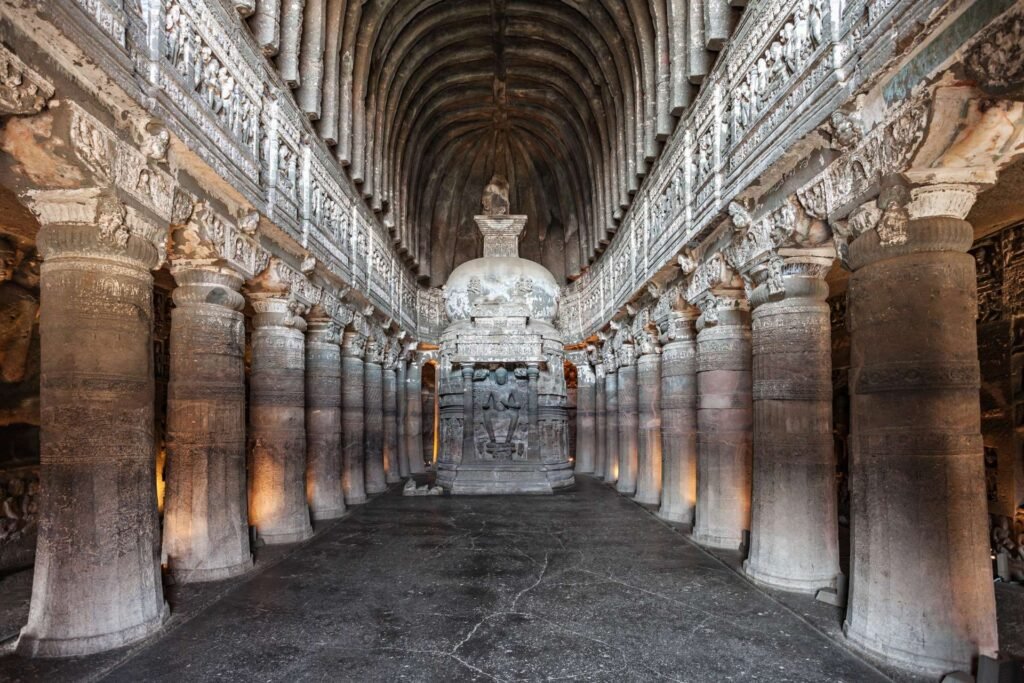Ancient Wonders That Put Instagram Spots to Shame
Step away from the crowded observation decks and overpriced photo ops for a moment. While everyone’s fighting for the perfect shot at the same ten famous landmarks, some of humanity’s most breathtaking achievements sit quietly in corners of the world, waiting to absolutely blow your mind. These ancient wonders to visit don’t just compete with modern Instagram hotspots – they demolish them entirely.
Think about it: we get excited about buildings that took a few years to construct, but scattered across our planet are structures that required generations to complete, engineering solutions that still puzzle modern architects, and artistic achievements that make contemporary art look like finger painting. These aren’t just old buildings – they’re proof that human creativity and ambition have been operating at extraordinary levels for thousands of years.
The irony is striking. We chase viral photo opportunities at places designed specifically for social media, while ignoring archaeological sites that represent genuine human triumph over impossible odds. These historical sites worth visiting offer something no manufactured experience can provide: authentic awe that comes from standing before achievements that seemed impossible when they were created, and still seem impossible today.
Why Ancient Beats Modern Every Time
Ancient civilizations built without modern machinery, computer modeling, or global supply chains. Every stone placed, every carving completed, every structural innovation represented human ingenuity working with basic tools and unlimited imagination. When you stand before these monuments, you’re witnessing what people accomplished through pure determination and brilliant problem-solving.
Modern attractions often prioritize efficiency and visitor throughput over genuine impact. Ancient ruins travel takes you to places built to last millennia, designed to inspire reverence and wonder rather than quick consumption. These sites were created by societies that thought in terms of legacy and permanence rather than quarterly profits and viral marketing.
The scale of ancient achievements becomes more impressive when you consider the limitations ancient builders faced. Moving massive stones without cranes, creating precise astronomical alignments without computers, and coordinating vast construction projects without modern communication systems required levels of organization and innovation that challenge our assumptions about historical capabilities.

Forgotten Engineering Marvels That Defy Logic
Sacsayhuamán in Peru represents architectural precision that modern construction crews struggle to replicate. These massive stone walls fit together so perfectly that you can’t slide a knife blade between the blocks. No mortar holds them together, yet they’ve survived centuries of earthquakes that have toppled modern buildings nearby. The largest stones weigh over 200 tons, moved and positioned with techniques that archaeologists still debate.
The engineering challenges involved in creating Sacsayhuamán make modern construction projects look simple by comparison. Ancient Inca builders somehow transported these enormous stones across mountain terrain, shaped them to fit together with millimeter precision, and assembled them into walls that remain standing after 500 years of weather and seismic activity.
Göbekli Tepe in Turkey pushes back the timeline of human architectural achievement by thousands of years. Built around 9,500 BCE, this complex predates Stonehenge by over 6,000 years and was constructed by hunter-gatherer societies that supposedly lacked the organizational skills for such projects. The site features intricate stone carvings, massive pillars arranged in precise circles, and evidence of planning that challenges everything we thought we knew about prehistoric capabilities.
These archaeological sites tourism reveals force us to reconsider human history itself. Göbekli Tepe was deliberately buried around 8,000 BCE for reasons we still don’t understand, suggesting ancient peoples made conscious decisions about preserving or concealing their greatest achievements.

Hidden Architectural Masterpieces
Borobudur in Indonesia stands as one of the world’s largest Buddhist monuments, yet many travelers have never heard of it. This 9th-century temple complex contains over 2,600 relief panels and 500 Buddha statues arranged in a mandala pattern that represents the Buddhist cosmology. The structure serves as both architectural marvel and spiritual journey, designed so that pilgrims experience enlightenment through the physical act of climbing to the summit.
The mathematical precision embedded in Borobudur’s design rivals anything produced by classical architects. The temple incorporates complex astronomical alignments, symbolic proportions based on Buddhist philosophy, and engineering solutions that have allowed the structure to survive volcanic eruptions and earthquakes for over a thousand years.
Hampi in India once served as the capital of the Vijayanagara Empire, containing architectural innovations that European visitors described as more magnificent than Rome. The ruins cover over 25 square kilometers and include temples carved from single pieces of granite, ancient hydraulic engineering systems, and structural techniques that allowed builders to create impossibly delicate stone work that appears to defy gravity.
These ancient monuments travel destinations showcase technological achievements that seem magical until you understand the sophisticated engineering principles involved. The musical pillars at Hampi’s Vittala Temple produce distinct notes when struck, demonstrating acoustic engineering knowledge that modern architects study to understand.

Lost Cities That Rewrite History
Angkor Wat in Cambodia gets attention, but the broader Angkor complex contains over 1,000 temples spread across 400 square kilometers, making it larger than modern Los Angeles. The hydraulic engineering that supported this massive urban center involved creating artificial lakes, canal systems, and water management infrastructure that sustained over a million residents during the 12th century.
Recent archaeological discoveries using ground-penetrating radar have revealed that Angkor was even larger and more sophisticated than previously understood. The complex included urban planning innovations, agricultural systems, and population density management techniques that wouldn’t be seen again until modern times.
Cahokia in Illinois represents the largest prehistoric settlement north of Mexico, containing earthwork mounds that required moving millions of cubic feet of soil using only human labor. The largest mound, Monks Mound, covers 14 acres at its base and rises 100 feet high, making it larger than the base of Egypt’s Great Pyramid and demonstrating organizational capabilities that challenge assumptions about pre-Columbian North American societies.
These historical wonders reveal complex civilizations operating at scales and sophistication levels that most people never associate with ancient Americas. Cahokia’s urban planning included residential districts, ceremonial centers, and infrastructure that supported populations larger than most European cities of the same period.
Precision That Humbles Modern Technology
The Antikythera Mechanism represents ancient Greek technological achievement that wasn’t matched until clockwork development in medieval Europe. This 2,000-year-old bronze device contains over 30 precision gears and could predict solar eclipses, track Olympic games, and calculate planetary positions with accuracy that astonishes modern astronomers.
The complexity of the Antikythera Mechanism suggests that ancient Greek technological capabilities were far more advanced than historical records indicate. The device demonstrates mathematical understanding, precision manufacturing, and astronomical knowledge that rival modern computer-assisted calculations.
Nan Madol in Micronesia consists of artificial islands connected by canals, built from massive basalt blocks that weigh up to 50 tons each. The construction required moving these enormous stones across water using techniques that remain mysterious, then assembling them into structures that have survived Pacific storms and tsunamis for over 1,000 years.
The engineering challenges involved in creating Nan Madol in the middle of the Pacific Ocean, using only traditional sailing vessels and human power, represent problem-solving abilities that modern engineers find difficult to replicate even with contemporary technology.

Artistic Achievements That Mock Modern Art
The Ajanta Caves in India contain paintings and sculptures created between 200 BCE and 650 CE that maintain their vibrant colors and intricate detail after 1,500 years. The artistic techniques involved in creating these masterpieces in dark cave environments, using natural pigments and handmade tools, produced results that modern restorers struggle to match.
These cave paintings demonstrate artistic sophistication, storytelling ability, and technical skill that puts most contemporary art to shame. The artists worked by oil lamp light, creating perspective, emotion, and detail that rivals Renaissance masters who had access to much better tools and training.
Easter Island’s Moai statues represent sculptural achievement on an impossible scale. Nearly 1,000 of these monuments dot the island, with the largest weighing 82 tons and standing 33 feet tall. Recent discoveries have revealed that the statues have full bodies buried underground and were likely “walked” to their final positions using sophisticated rope and movement techniques.
The cultural and artistic vision required to conceive and execute the Moai project over several centuries demonstrates planning, resource management, and artistic consistency that few modern projects achieve.
Archaeological Sites That Change Perspectives
Derinkuyu in Turkey extends 18 levels underground, capable of housing 20,000 people with livestock, food storage, and ventilation systems that functioned perfectly without modern technology. This underground city represents urban planning and engineering on a scale that seems impossible without machinery, yet it was carved entirely by hand from solid rock.
The complexity of Derinkuyu’s design includes defensive systems, religious spaces, schools, and even wineries, all connected by tunnels narrow enough to defend but sophisticated enough to support a large population indefinitely. Archaeological sites tourism to locations like this reveals human adaptability and ingenuity that modern urban planners study for inspiration.
Newgrange in Ireland predates both Stonehenge and the Egyptian pyramids, yet incorporates astronomical alignments so precise that sunlight penetrates the burial chamber only during winter solstice sunrise. The engineering required to create this effect using Stone Age tools demonstrates mathematical and astronomical knowledge that challenges assumptions about Neolithic capabilities.
Why These Places Matter More Than Ever
In our age of digital experiences and virtual reality, these ancient wonders to visit offer something that technology cannot replicate: the humbling experience of standing before genuine human achievement. These sites prove that creativity, ambition, and problem-solving ability aren’t modern inventions – they’re fundamental human characteristics that have produced extraordinary results throughout history.
These historical landmarks also provide perspective on what’s truly impressive. While we marvel at buildings that took a few years to complete, ancient civilizations created monuments that required generations of sustained effort, planning, and resource management. The commitment involved in these projects makes most modern achievements look like short-term thinking.
Archaeological discoveries continue revealing that ancient peoples were far more sophisticated than we’ve traditionally assumed. Each new finding pushes back the timeline of human achievement and forces us to reconsider our assumptions about technological and cultural development.
Planning Your Ancient Adventure
Visiting these archaeological wonders requires different planning than typical tourist destinations. Many sites lack the infrastructure of famous landmarks, but this absence of commercialization often enhances the experience. You’ll encounter these monuments much as early explorers did – as discoveries rather than tourist attractions.
Research the historical context before visiting to fully appreciate what you’re seeing. Understanding the technological limitations ancient builders faced makes their achievements even more impressive. Learning about the civilizations that created these wonders adds emotional depth to the visual impact.
Consider hiring local guides who understand both the archaeological significance and cultural context of these sites. Their knowledge transforms what might seem like old ruins into stories of human ingenuity, cultural achievement, and historical importance that guidebooks cannot convey.
These ancient wonders offer something that no Instagram hotspot can provide: genuine awe that comes from witnessing impossible human achievements. When you stand before monuments that represent the best of human creativity and determination, you realize that the most impressive wonders aren’t the ones designed for social media – they’re the ones that have been inspiring wonder for thousands of years.
If you liked this article, check the other ones on Majestic Mondo website. Consider joining the Instagram community as well, to fully enjoy the beauty of our planet.




Leave a Reply